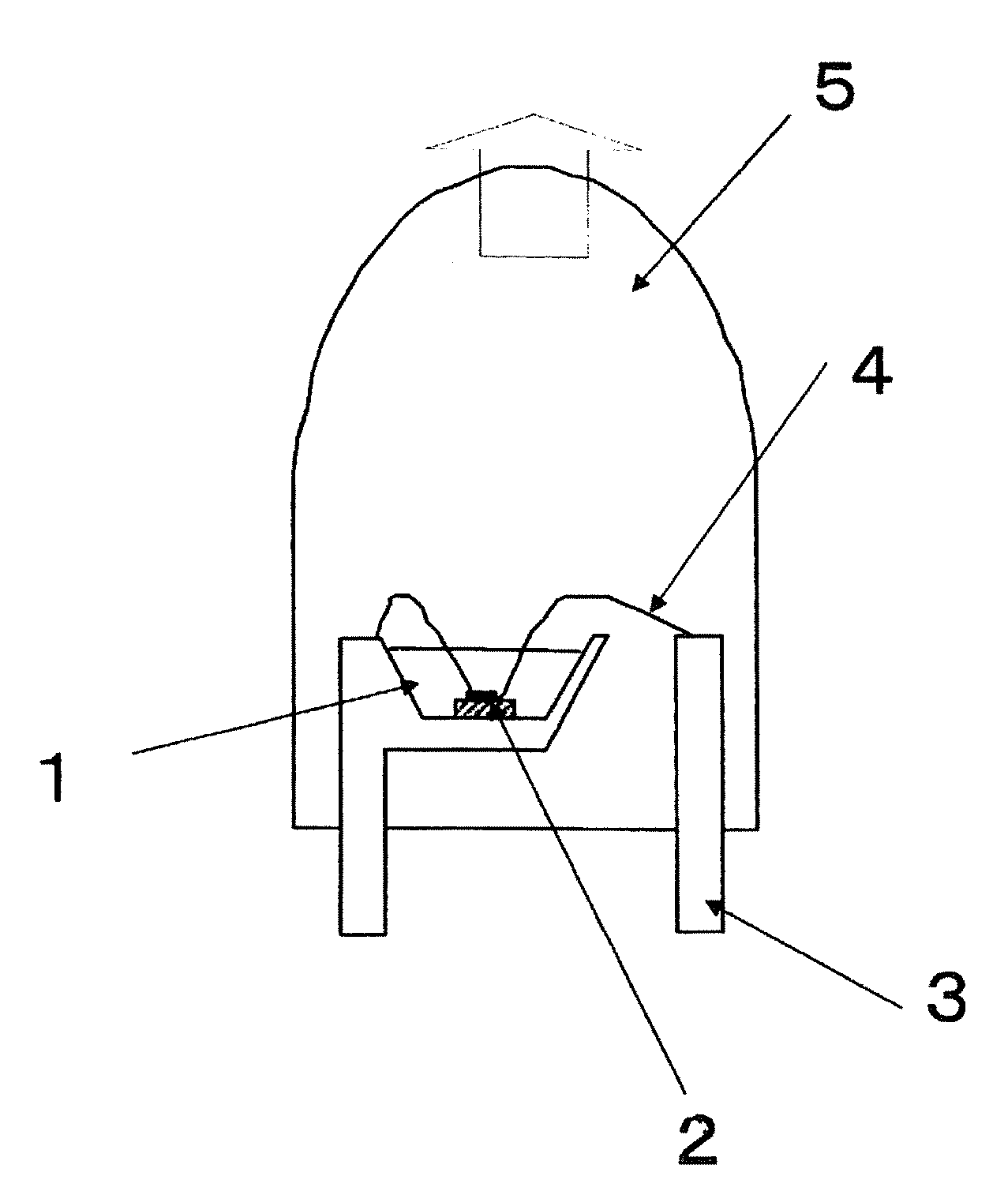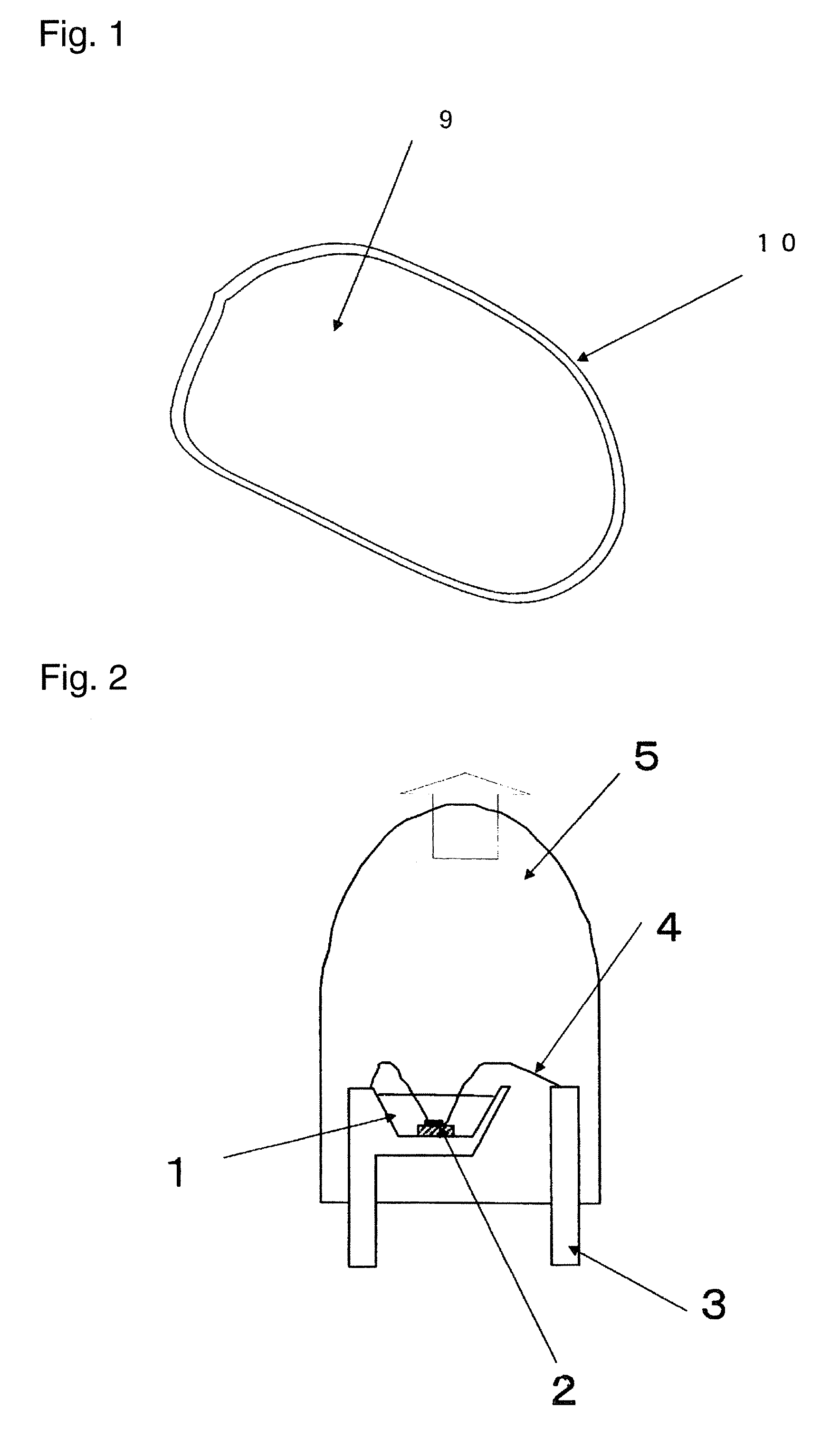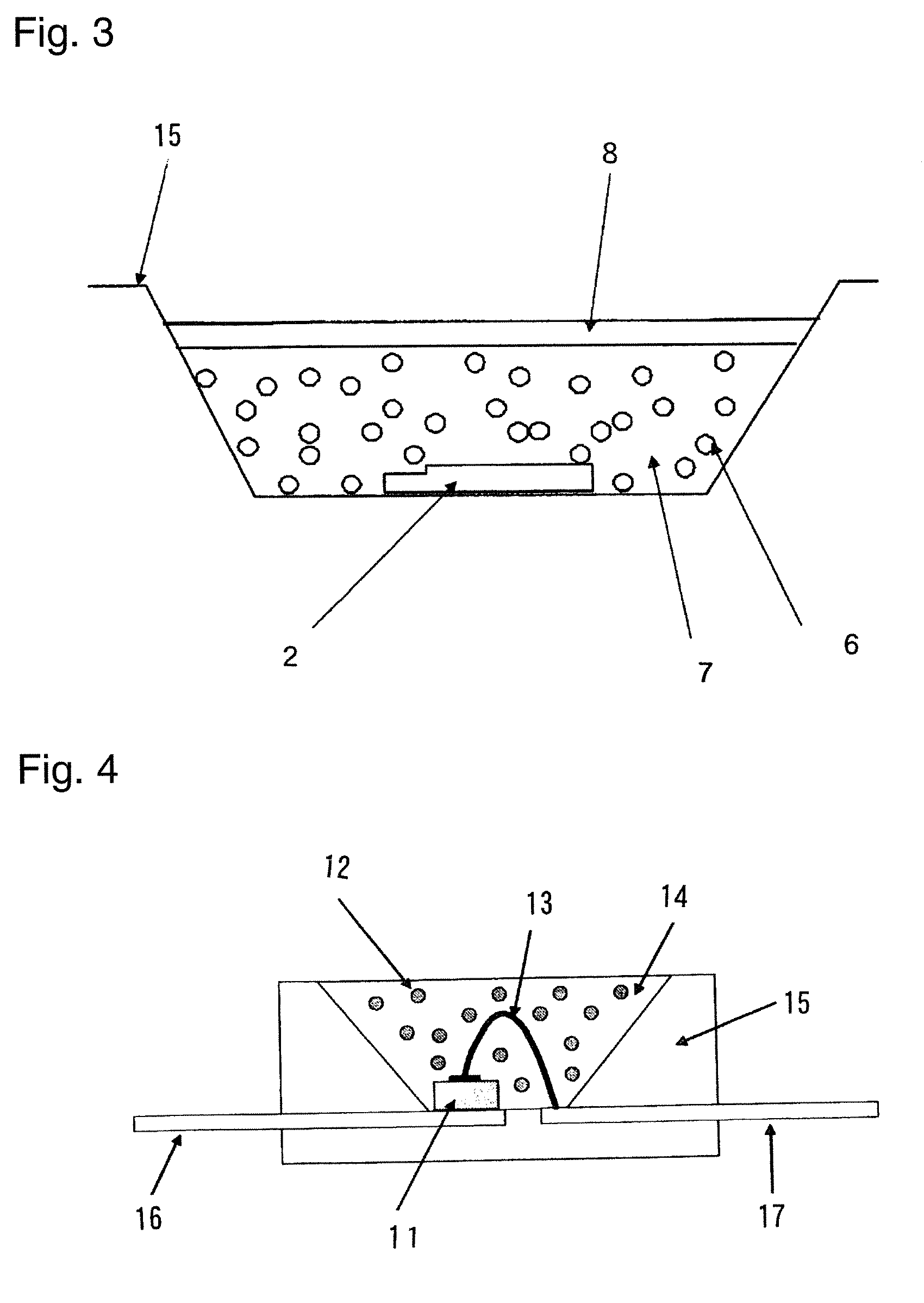Fluorescent substance and process for producing the same, and luminescent element using the same
a fluorescence substance and luminescent element technology, applied in the field of white led, can solve the problems of inability to obtain phosphor powder of nitride phosphor or oxynitride phosphor with satisfactory properties, increased chance of incorporation of impurities, and introduction of defects into the surface of each particle, etc., to achieve excellent luminescence properties, high energy efficiency, and superior fluorescence properties
- Summary
- Abstract
- Description
- Claims
- Application Information
AI Technical Summary
Benefits of technology
Problems solved by technology
Method used
Image
Examples
example 1
Example 1-1
[0141]An α-sialon of this example had a composition of raw-material powders composed of 83.0 parts by mass of a silicon nitride powder (manufactured by Denki Kagaku Kogyo Kabushiki Kaisha, 9FW grade), 10.5 parts by mass of an aluminum nitride powder (manufactured by Tokuyama Corporation, F grade), 1.5 parts by mass of a europium oxide powder (manufactured by Shin-Etsu Chemical Co., Ltd., RU grade) and 5.5 parts by mass of a calcium sulfide powder (manufactured by Wako Pure Chemical Industries, Ltd.).
[0142]Then the above raw-material powders were mixed by a wet ball mill with a silicon nitride pot and balls in an ethanol solvent for three hours, and filtered and dried to obtain a powder mixture. An amount of oxygen in the powder mixture was measured by an oxygen analyzer manufactured by LECO Corporation and it was 1.2 mass %. 100 g of the powder mixture was filled in a boron nitride crucible with an inner diameter of 100 mm and a height of 60 mm, and subjected to a heat tr...
example 1-2
[0145]An α-sialon phosphor was produced in the same manner as in Example 1-1 except that 2.8 parts by mass of a calcium sulfide powder and 3.8 parts by mass of a calcium carbonate (hereinafter also referred to simply as “CaCO3”) powder (manufactured by KANTO CHEMICAL CO., INC., a guaranteed reagent) were used instead of 5.5 parts by mass of a calcium sulfide (hereinafter also referred to simply as “CaS”) in the raw-material powders of Example 1-1. In this case, the molar ratio of CaS / CaCO3 is 1. An amount of oxygen in the powder mixture of the raw-materials was 3.4 mass %.
[0146]A composition of the α-sialon thus obtained was Ca0.48Eu0.05Si10.4Al1.6O0.5N15.5, wherein X+Y=0.53 and Y / (X+Y)=0.09. An amount of oxygen calculated based on the compositional formula was 1.36 mass %. An amount of oxygen in the α-sialon phosphor obtained was measured with the oxygen analyzer manufactured by LECO Corporation and it was 1.71 mass %. Furthermore, a fluorescence property was measured in the same m...
example 1-3
[0149]The α-sialon phosphor obtained in Example 1-2 was dispersed in a solution mixture of 48% hydrofluoric acid:60% nitric acid:distilled water=40:10:50 (vol %), maintained at 50° C. for 2 hours, washed and filtered with distilled water, further dispersed in a solution mixture of concentrated sulfuric acid:distilled water=50:50 (vol %), maintained at 90° C. for 2 hours, washed and filtered with distilled water, and dried. An amount of oxygen in the powder obtained was 1.55 mass %. A relative value of the luminescence intensity was 90.
PUM
| Property | Measurement | Unit |
|---|---|---|
| diameter | aaaaa | aaaaa |
| refractive index | aaaaa | aaaaa |
| refractive index | aaaaa | aaaaa |
Abstract
Description
Claims
Application Information
 Login to View More
Login to View More - R&D
- Intellectual Property
- Life Sciences
- Materials
- Tech Scout
- Unparalleled Data Quality
- Higher Quality Content
- 60% Fewer Hallucinations
Browse by: Latest US Patents, China's latest patents, Technical Efficacy Thesaurus, Application Domain, Technology Topic, Popular Technical Reports.
© 2025 PatSnap. All rights reserved.Legal|Privacy policy|Modern Slavery Act Transparency Statement|Sitemap|About US| Contact US: help@patsnap.com



